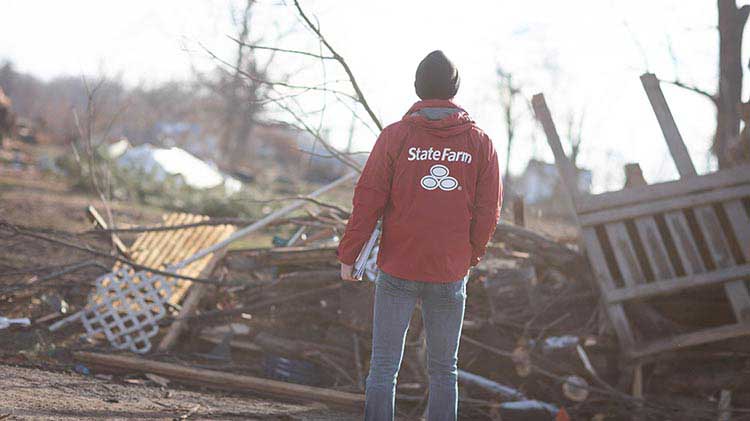What to do after a tornado
When the calm before the tornado becomes the chaos after it, use these tips to help recover and stay safe.
Aftermath of a tornado
If you end up in the path of a tornado, the experience can be traumatizing, no matter how well you prepared ahead of time. Try to stay as calm as possible and follow these tornado safety and recovery tips as you pick up the pieces.
Immediately after a tornado
- The safety of you and your family is the most urgent need after a tornado. Check everyone for injuries and give first aid for minor injuries. Call for medical help immediately if needed.
- In the event someone stops breathing and you are trained, administer CPR until emergency help arrives.
- To help stop bleeding apply direct pressure to a bleeding injury, clean open wounds with soap and water and apply antibiotic ointment. Contact your physician to follow up or determine additional treatment.
- Reach out to check on your neighbors to ensure they are safe and do not require immediate emergency care.
- Watch for additional emergency alerts on your phone, or stay tuned to NOAA Weather Radio or a local alert system for current information and instructions.
- If you're trapped, cover your mouth with a cloth or mask to avoid breathing dust. And instead of shouting, try to send a text, bang on a pipe or wall or use a whistle.
- Stay clear of fallen power lines or broken utility lines.
- Report downed power lines or broken gas lines immediately.
- If you're driving and see a downed power line in your path, stay in your vehicle and call 911 or the electric utility.
- Power outages are common after a tornado. Save your phone battery for emergencies and to let family and friends know you are safe. Use battery-powered lanterns instead of candles.
- If you haven't lost power but smell something burning, see frayed or sparking wires or suspect a gas leak, call the professionals.
Assessing tornado damage
- Don't enter damaged buildings until you are told they are safe.
- Use extreme caution around debris and watch for broken glass, nails and other sharp objects. Wear appropriate clothing, like sturdy shoes or boots, long sleeves and gloves.
- Inspect your home or apartment for any signs of structure issues.
- Follow all proper power outage tips and generator safety tips.
- Take pictures of your home's damage, inside and out.
If you've been affected by the recent tornado in your area and need to report your claim, text the word “CLAIM” to 62789 to receive a link or you can report easily through statefarm.com®, our State Farm mobile app, contacting your State Farm agent or calling 800-SFClaim 800-732-5246800-732-5246.
If you determine your home sustained damage, to protect your property from further damage or loss, be sure to make reasonable and necessary temporary repairs. Keep an accurate record of repair expenses along with any photos of damage. If you have a covered loss, these repairs may be reimbursed by State Farm.
As you work to get back to a sense of normalcy, the American Red Cross has good information on how to clean up after a tornado.
